By Steven Malik Shelton
January 8, 2014
Last February, Detroit Mayor Mike Duggan announced an initiative to outfit Detroit Department of Transportation buses with video surveillance cameras. Ostensibly, the measure is being implemented as a method to make passengers and bus drivers safer from a slew of well publicized assaults on passengers and drivers in Detroit as well as in many cities throughout the nation.
There is concern, however, by many civil libertarian and privacy rights advocates who perceive the proliferation of surveillance cameras and other intrusive devises as a clear violation of our constitutional rights and a precursor to a police state far more advanced and sophisticated than the one depicted in the classic novel, 1984, by British author George Orwell.
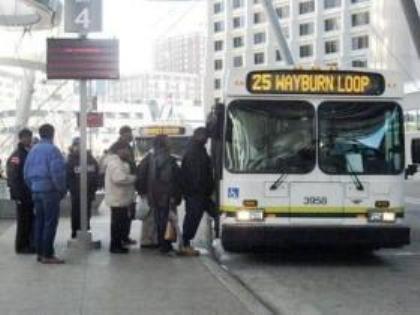
Will these D-DOT riders, entering bus at Rosa Parks Terminal, be spied on with video and audiotapes? What would Rosa Parks say?
The increased and accelerated installation of closed circuit television cameras (CCTC) in public and (even) private locations is troubling enough, but when considered within the framework of the deportment of a wide assortment of other types of surveillance systems, it becomes shocking and frightening in its dire implications.
The prevalence of highly advanced and effective privacy invading surveillance technology-which is either maintained and monitored by government agencies or although engineered and installed by private companies could potentially be accessed by government and law enforcement entities- is startling. This is a relatively new development which is staggering in its potential for manipulation and the most egregious abuse which cut away at the core of not only what it means to be a citizen of a so-called free republic, but what it means to be a human being.
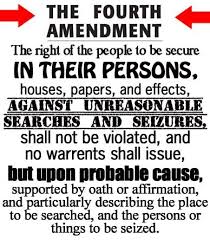 Within the last 15 years, what has been described as a giant surveillance grid has been established in the form of new, incredibly advanced listening devices equipped with software that can store, identify, and analyze millions of voices. This voice recognition technology is also installed in conjunction with CCTV on city buses in San Francisco Ca; Baltimore MD; Hartford Conn; Eugene Ore; Traverse City, Mi.; and there are plans to install them in many more cities throughout the nation.
Within the last 15 years, what has been described as a giant surveillance grid has been established in the form of new, incredibly advanced listening devices equipped with software that can store, identify, and analyze millions of voices. This voice recognition technology is also installed in conjunction with CCTV on city buses in San Francisco Ca; Baltimore MD; Hartford Conn; Eugene Ore; Traverse City, Mi.; and there are plans to install them in many more cities throughout the nation.
Many experts believe that such surveillance devises are a clear violation of the Fourth Amendment to the US Constitution which affirms the right of the people to be secured, not only in their houses, papers and effects, but in their persons against unreasonable searches and seizures.
“Privacy relates to the right or the ability of individuals to determine how much and what information about themselves is to be revealed to others,” writes Judge Andrew P. Napolitano.
“Additionally, privacy relates to the idea of autonomy, the freedom of individuals to perform or not perform certain acts or to subject themselves to certain experiences.
Nowhere in the Constitution is the government granted the power to monitor or regulate our daily conduct. Remember the Constitution grants power to the federal government and retains for the states and people that power which is not specifically granted. The Constitution keeps the government off our backs.
So far that hasn’t stopped infringements, including the government’s proposed use of drones –some the size of golf balls –to watch and listen to us. But the fact remains: by simply being human, you have a right to privacy existing far before the founding of the United States.”1
There are plans to use unmanned aerial drones (devices made infamous in foreign war zones) domestically in the United States. These drones are being introduced to the American people as benign devices that will be utilized for innocent activities like the delivery of postal packages and consumer goods, but there are only a few incremental steps from delivering products to outright surveillance to eventually fitting them with weapons and thus empowering the government with tyrannical policing and crowd control tools.
“Unmanned aerial drones have been used with great success by the US military overseas,” writes Michael Snyder. “And now the US government is promoting their use to local law enforcement authorities all over America. In the years ahead, our skies will likely be filled with these things. Many of them are incredibly quiet and can gather information about you from above. In fact, one could be directly over your home right now.”2
There has also been tremendous development in facial recognition technology, which makes the push for increased CCTV monitoring much more insidious and threatening.
This calls into question the argument that supporters of surveillance technology often put forward; that once a person leaves the privacy of their home and enters the public arena, that person should have no expectation of privacy. Yet to be viewed by the naked human eye, and to by actively monitored and recorded by advanced state-of-the-art surveillance cameras and listening devises are of two different worlds.
“Today’s surveillance camera is not merely the equivalent of a pair of eyes,” explains a study conducted by the New York Civil Liberties Union. “It has super-human vision. It has the capacity to zoom in and read the pages of the book you have opened while waiting for a train in the subway. What’s more, this camera can tilt, pan, and rotate-making it increasingly easy to track you as you move through your day. Facial recognition software, while still imperfect, will someday be able to capture your image from the faces in a crowd, and then compose the image of your face against the facial images stored in a law-enforcement database.”3
With the proliferation of surveillance cameras trained on the general public, there is also a trend whereby surveillance devices are becoming more common in places once considered sanctuaries from such intrusions. Some hospitals are now rigging closed circuit television cameras, not only in the lobbies, parking lots and hall ways, but in patient rooms and even in wash rooms reportedly to ensure that hospital staff are washing their hands. And there are incidents of the installation of hidden cameras in patient rooms and even within staff locker rooms in some US hospitals.4
Closed circuit television cameras, as well as high activity location observation cameras, are also becoming more common in our public schools, and there is a nation-wide move to place these devices directly into class rooms where American children can be monitored, tagged and stigmatized for “disruptive” behavior tendencies and non-conformist or anti-authority thinking patterns.
Today, in many if not most school districts across the nation, the wrong words uttered by a child in ear-shot of a teacher or staff member can result in the child being placed in a jail cell or a psychiatric ward.
Some social scientists as well as concerned parents and citizens perceive this as an initiative to intimidate children into submission to an authoritarian government, to erode critical thinking tendencies and to mold our children into adults that are not creative, courageous, and freedom loving individuals but frightened and cookie-cutter versions of a dumbed-down, medicated, obedient population reminiscent of the protagonists in author Alex Huxley’s classic work, ‘Brave New World.’
“The moment young people walk into school, they increasingly find themselves under constant surveillance,” writes attorney and civil liberties advocate, John W. Whitehead. “They are photographed, fingerprinted, scanned, x-rayed, sniffed, and snooped on. Between metal detectors at entrances, drug sniffing dogs in the hall ways, and surveillance cameras in the classrooms and elsewhere, many of America’s schools look more like prisons than learning facilities.”5
The question is often asked: does increased surveillance keep people safer? A more valid concern should be, even if it may, is it worth the trade off in terms of giving up privacy for a safety that infringed on the very essence of what it means to be autonomous and dignified human beings? In other words, if safety means being almost constantly watched and probed as though we are lab mice or exotic fish in an aquarium; most Americans would reasonably opt-out.
In national studies on the effect of CCTV on public safety, it appears that its influence is marginal at best. For example, a Chicago city spokesperson is quoted as saying that surveillance cameras helped solve 4,500 crimes over four years, but this is a paltry number when one considers that over a million crimes were estimated to have occurred in Chicago during that time period which registers as only a 0.05% effect on crime.
Other studies indicate that there is very little (if any) significant impact or relationship between surveillance cameras and the reduction of crime, particularly violent crime. Moreover, in those studies where statistics show a reduction in violent incidents after the installation of CCTV, they do not take into account that the reduction in crime is a reflection of, not necessarily the CCTV, but the fact violent crimes across the nation have been in steady decline since 1990 when there was 729 reported incidents per 100,000 of population; to under 386 incidents per 100,000 incidents of violent crime in the year 2012. 6

These individuals, caught on a surveillance camera, were said to have been involved in a crime. However, no crime is seen.
Other concerns related to CCTV are reports of abuse in which police and/or security personnel are targeting specific genders and racial groups that has nothing to do with security or safety.
Moreover, surveillance images have been downloaded by unscrupulous operators acting under color of authority and used to scrutinize certain sensitive and private parts of a women’s anatomy. Surveillance tapes have also been appropriated by dishonest personnel of people of people going into places such as gay bars, porn shops and strip clubs and used to black mail unsuspecting patron s.
There is also numerous studies that show that Blacks and other so-called minorities are much more likely to be watched and followed by CCTV as well as the plethora of other viewing and spying equipment and systems increasingly utilized by government and corporate organizations and agencies.
Even if agents that are actively viewing surveillance equipment are honest people without particular racial/ethnic bias or sexual proclivities, CCTV data is almost universally being stored en masse on huge computer banks and stored in central locations that are either directly controlled or able to be accessed by the government without the requirement of search warrants or judicial review. Thus mass amounts of uncensored visual and audio information can be stored (often without any time limits) and watched or listened to by any person who has access, legal or otherwise.
In addition the government is funding, not only electronic license plate readers, but also roving vans equipped with mobile x-ray screening capability, which can be dispatched through America’s streets and thoroughfares to scan parked vehicles, pedestrians going about their business, and to see what’s inside vehicles and under clothes, as well as view what’s going on behind walls and closed doors.7
Steven Malik Shelton is a journalist and human rights advocate. He can be reached at malikshelton19@aol.com
References:
1 Judge Andrew P. Napolitano, “The Freedom Answer Book,” Thomas Nelson Publishers, (2012) p. p. 124, 125
2 “19 Signs That America is Being Transformed into A Giant Surveillance Grid,” by Michael Snyder 9Sept. 24th 2012, accessible online at http://endofthe Americandream.com
3 “Who’s Watching? Video Surveillance in New York City and the Need for Public Oversight,” A Special Report by the New York Civil Liberties Union (Fall 2006)
4 “Privacy vs safety: surveillance in hospitals,” by Xavier Symons (22 Feb. 2014) Accessible online at: http://www.bioedge.org/index.php/bioethics/bioethics_article/10857
5 John W. Whitehead, “A Government of Wolves: The Emerging Police State,” SelectBooks,Inc. (2013) p. 185
6 “The Statistical Portal: Statistics and Studies from more than 18,000 Sources. Accessible online at: www.statista.com/statistics/191219/reported-violent-crime-rate-in-the-usa-since-1990/
7 John W. Whitehead, “A Government of Wolves: The Emerging Police State,” SelectBooks, Inc. (2013) p. p. 124, 125

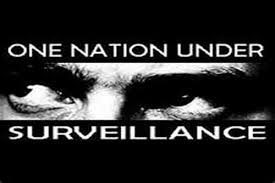
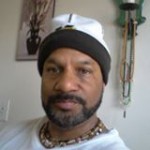
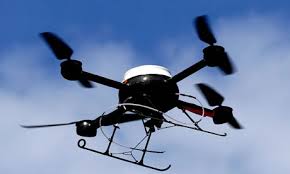
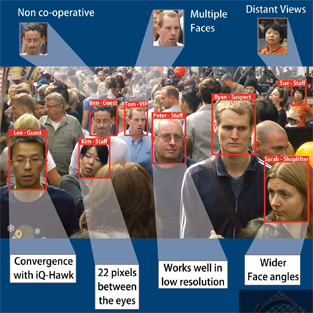
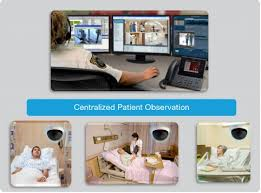
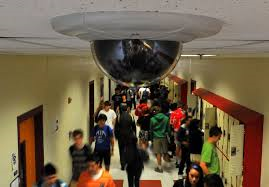
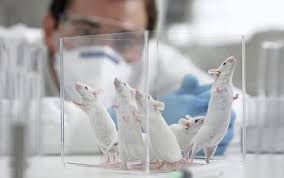
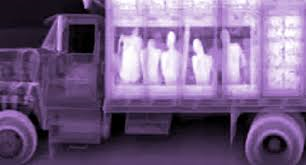




While I agree with you on the danger posed by mass surveillance I believe there is a need to protect bus drivers from thugs. That said, maybe it would be better to allow bus drivers to carry weapons to defend themselves.
I know the best way to handle this. All out unchangeable law that no images captured may be used as evidence in any court except for the specific reason for the camera on that day. For example, the bus cameras are to protect people and the driver on the bus from violence, that and only that may the video be used against someone. Drones meant to deliver a product, or to help find a lost child may not use anything captured as evidence against anyone. Even murder. It must be this way because precedent becomes law. When we allow the rights of one person to be taken away, we set that precedent. That’s how they get us. They take away the rights of the Hated, despised people, that way we stupidly approve.
Whether or not we provoked it, The threat of terrorism is Real. Whether or not mass surveilance has yet stopped a terrorist, it will in the future. That is why we need the bulk data collection. To protect our freedom, this data must only used to stop crimes of terror, and never allowed in criminal court. Anyone can be framed during sneek and peeks.